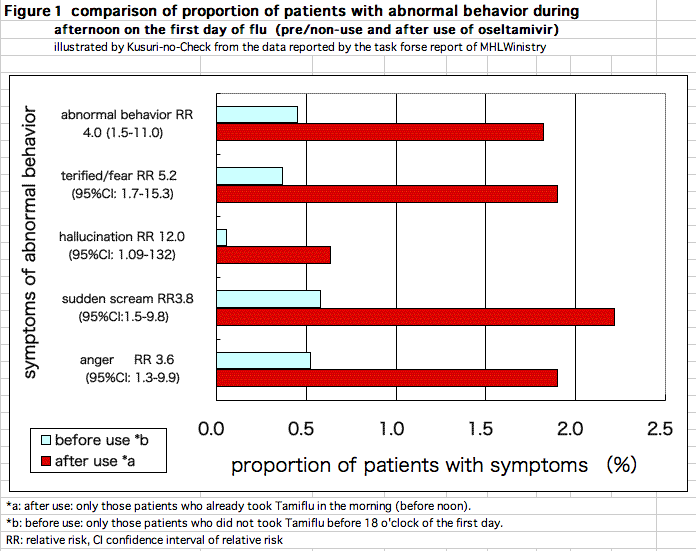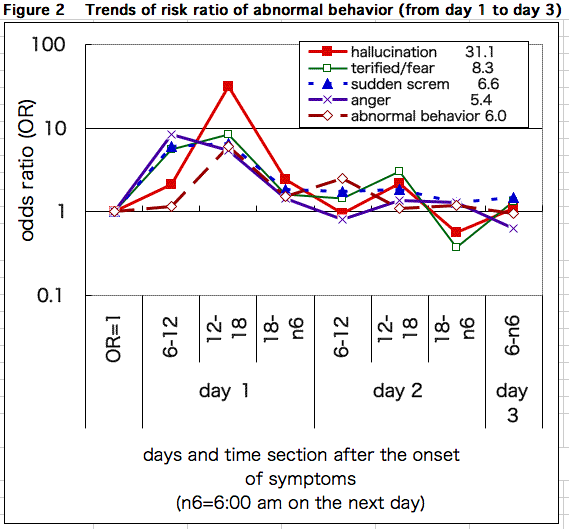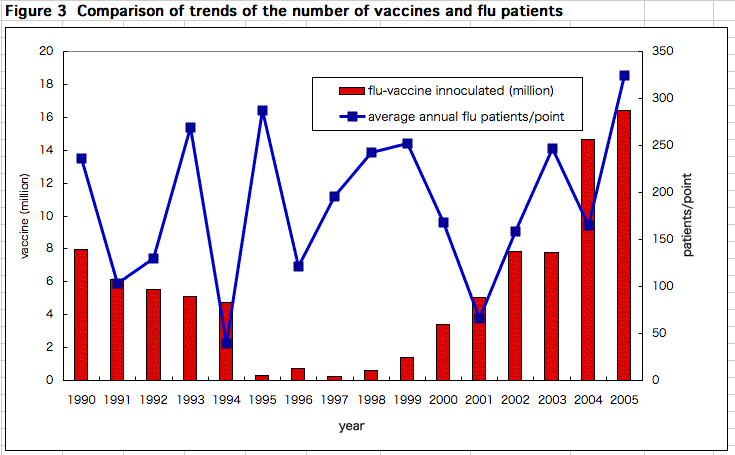August 23, 2009 03 at 11 min / offer: Mainichi
While in the country become a pandemic flu outbreak, Japan Pediatric Society (Chairman Yokota Shiyunpei), the patients have continued to occur in children with acute encephalopathy pandemic flu, medical institutions, such as if you have symptoms of impaired consciousness in doubt should consult the people started calling immediately. Could occur for many patients and encephalopathy, the society has begun to establish a system of clinics in each region to assure support for critically ill patients. [Eguti Hazime, Junko Adachi]
Most influenza encephalopathy in children under 6 years old. 21 cases of encephalopathy in children in the country until six cases were reported in 22 days, Ichihara, Chiba Prefecture, has been one reported cases. Symptoms are changing rapidly, after a high fever, sudden or continued seizures, impaired consciousness and lead to the nonsensical behavior. Too intense swelling of the brain or the immune response to the virus in the body, which is likely to develop blood vessels and organs have been damaged.
Professor Tsuneo Morishima Okayama representative ministry study group (of infectious disease), according to the year about 100 patients every year, or about 25 percent remains in the after-effects such as cerebral palsy. Mortality rate is just shy of 10 percent.
The symposium will have a series of new reported cases of influenza encephalopathy, intensive care unit (ICU) patients that there was a heavy emphasis is needed and ventilator therapy. On the "Fall-Winter inevitable outbreak of pandemic influenza in children, fear the increase in incidence of encephalopathy (utensil) is" as a reminder that through the ministry.
They warned that in the guardians of the society, in addition to flu symptoms such as fever or cough, but that it should have medical checkup in early if signs of encephalopathy.
Specifically, the decreased level of consciousness and answer the call (disturbance of consciousness) ▽ or continued seizures, impaired consciousness after the seizure of unknown meaning ▽ behavior - has been careful and hope. Antipyretic strong as some factors that can be severe encephalopathy, without having to take place freely in the home medicine urged always to consult a doctor.
However, even severe cases of encephalopathy and multiple patients if the new increase, as might be confusing medical institutions in the region, told members of the various Academy of Pediatrics, was asked to develop a readiness to receive critically ill patients. Hospitals and patient acceptance of such severe encephalopathy, or specify a non-hospital treatment of influenza encephalopathy patients, is considering a pre-determined response and transport to the hospital where his condition deteriorated and when.
Morishima's "whether a greater proportion of patients compared to seasonal influenza encephalopathy - is not new, the scale of the epidemic could grow to several times the patients. Necessary measures to speed up the development of critically ill patients there is, "he said.
While in the country become a pandemic flu outbreak, Japan Pediatric Society (Chairman Yokota Shiyunpei), the patients have continued to occur in children with acute encephalopathy pandemic flu, medical institutions, such as if you have symptoms of impaired consciousness in doubt should consult the people started calling immediately. Could occur for many patients and encephalopathy, the society has begun to establish a system of clinics in each region to assure support for critically ill patients. [Eguti Hazime, Junko Adachi]
Most influenza encephalopathy in children under 6 years old. 21 cases of encephalopathy in children in the country until six cases were reported in 22 days, Ichihara, Chiba Prefecture, has been one reported cases. Symptoms are changing rapidly, after a high fever, sudden or continued seizures, impaired consciousness and lead to the nonsensical behavior. Too intense swelling of the brain or the immune response to the virus in the body, which is likely to develop blood vessels and organs have been damaged.
Professor Tsuneo Morishima Okayama representative ministry study group (of infectious disease), according to the year about 100 patients every year, or about 25 percent remains in the after-effects such as cerebral palsy. Mortality rate is just shy of 10 percent.
The symposium will have a series of new reported cases of influenza encephalopathy, intensive care unit (ICU) patients that there was a heavy emphasis is needed and ventilator therapy. On the "Fall-Winter inevitable outbreak of pandemic influenza in children, fear the increase in incidence of encephalopathy (utensil) is" as a reminder that through the ministry.
They warned that in the guardians of the society, in addition to flu symptoms such as fever or cough, but that it should have medical checkup in early if signs of encephalopathy.
Specifically, the decreased level of consciousness and answer the call (disturbance of consciousness) ▽ or continued seizures, impaired consciousness after the seizure of unknown meaning ▽ behavior - has been careful and hope. Antipyretic strong as some factors that can be severe encephalopathy, without having to take place freely in the home medicine urged always to consult a doctor.
However, even severe cases of encephalopathy and multiple patients if the new increase, as might be confusing medical institutions in the region, told members of the various Academy of Pediatrics, was asked to develop a readiness to receive critically ill patients. Hospitals and patient acceptance of such severe encephalopathy, or specify a non-hospital treatment of influenza encephalopathy patients, is considering a pre-determined response and transport to the hospital where his condition deteriorated and when.
Morishima's "whether a greater proportion of patients compared to seasonal influenza encephalopathy - is not new, the scale of the epidemic could grow to several times the patients. Necessary measures to speed up the development of critically ill patients there is, "he said.

 TProportion of patients with abnormal behavior, according to doctor's information, were 0.5% in pre/non-treated cases and 1.8 % in treated cases. "Being terrified/fear" was 0.4% vs 1.9%. "Hallucination" was 0.05% vs 0.6%. "Sudden scream/ delirious speech" was 0.6% vs 2.2%. "Anger" was 0.5% vs 1.9%. All these adverse events were observed much more in Tamiflu-treated cases. The incidence proportions in treated cases were almost four times higher or more (Figure 1).
TProportion of patients with abnormal behavior, according to doctor's information, were 0.5% in pre/non-treated cases and 1.8 % in treated cases. "Being terrified/fear" was 0.4% vs 1.9%. "Hallucination" was 0.05% vs 0.6%. "Sudden scream/ delirious speech" was 0.6% vs 2.2%. "Anger" was 0.5% vs 1.9%. All these adverse events were observed much more in Tamiflu-treated cases. The incidence proportions in treated cases were almost four times higher or more (Figure 1). The figure shows that symptoms such as "being terrified/fear", "anger", and "sudden scream" started appearing more frequently in treated cases in the morning on the first day of fever. In the afternoon, ratios of all symptoms increased. It means that they were observed more in treated cases. From the evening till the morning on the second day, the ratio decreased. In the afternoon on the second day, the ratio slightly increased, but the ratios for most symptoms went to 1. It means that the symptoms almost disappeared from the evening on the second day till the third day.
The figure shows that symptoms such as "being terrified/fear", "anger", and "sudden scream" started appearing more frequently in treated cases in the morning on the first day of fever. In the afternoon, ratios of all symptoms increased. It means that they were observed more in treated cases. From the evening till the morning on the second day, the ratio decreased. In the afternoon on the second day, the ratio slightly increased, but the ratios for most symptoms went to 1. It means that the symptoms almost disappeared from the evening on the second day till the third day. What should we do?
What should we do?
Comment